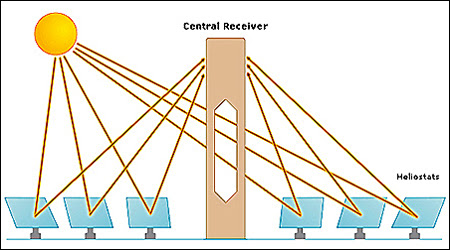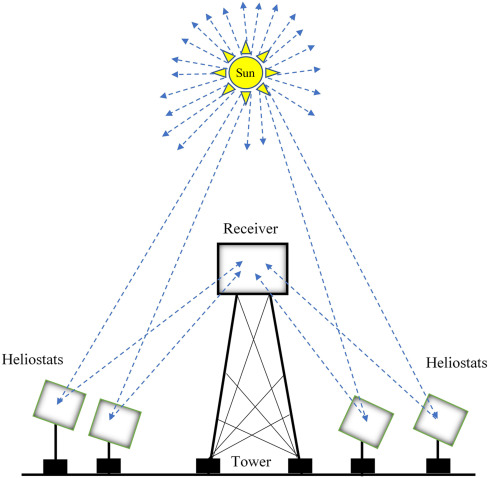
Introduction
Concentrated Solar Power (CSP) systems are a type of renewable energy technology that harnesses the power of the sun to generate electricity. These systems use mirrors or lenses to concentrate sunlight onto a small area, which then heats a fluid or produces steam to drive a turbine and generate electricity. CSP systems are becoming increasingly important in the context of renewable energy due to their ability to provide clean, sustainable power.
Historical Background
The history of CSP systems can be traced back to ancient civilizations, who used magnifying glasses and mirrors to concentrate sunlight for heating and cooking purposes. In the 1800s, scientists began exploring the potential of solar energy for generating electricity. Significant milestones in CSP technology include the invention of the first parabolic trough system in the 19th century and the development of power tower systems in the 20th century. Over time, CSP systems have evolved to become more efficient and cost-effective.
Key Concepts and Definitions
Concentrated Solar Power (CSP) systems refer to the use of mirrors or lenses to concentrate sunlight onto a small area, which then generates heat to produce electricity. Some key terms and concepts related to CSP systems include concentrated solar energy, solar thermal power, parabolic troughs, power tower systems, and solar dish/engine systems. Concentrated solar energy refers to the process of focusing sunlight onto a small area, while solar thermal power is the conversion of solar energy into thermal energy. Parabolic troughs, power tower systems, and solar dish/engine systems are different types of CSP technologies.
Main Discussion Points
Types of CSP Systems
There are several types of CSP systems, including parabolic trough systems and power tower systems. Parabolic trough systems consist of curved mirrors that concentrate sunlight onto a receiver tube running along the focal line of the parabola. The heat absorbed by the receiver tube is then used to generate steam, which drives a turbine to produce electricity. Parabolic trough systems are widely used due to their efficiency and reliability. However, they have limitations in terms of their size and cost.
Applications of CSP Systems
CSP systems have various applications, including electricity generation and industrial process heating. In terms of electricity generation, CSP systems use concentrated solar energy to heat a fluid or produce steam, which in turn drives a turbine to generate electricity. CSP systems offer advantages such as scalability, grid integration, and the ability to produce electricity even when the sun is not shining. In the context of industrial process heating, CSP systems can be used to provide heat for manufacturing processes, reducing the reliance on fossil fuels.

Environmental Benefits of CSP Systems
CSP systems offer several environmental benefits. Firstly, they contribute to a reduction in greenhouse gas emissions since they rely on the sun’s energy rather than fossil fuels. Secondly, CSP systems help conserve natural resources by using sunlight, which is a renewable and abundant resource. Lastly, CSP systems can be integrated with energy storage technologies, allowing for the storage of excess energy and enabling a more reliable and stable power supply.
Case Studies or Examples
There are numerous real-world examples of successful CSP projects. One example is the Ivanpah Solar Power Facility in California, which is one of the world’s largest CSP plants. This facility uses power tower technology to concentrate sunlight and generate electricity. Another example is the Noor Ouarzazate Solar Complex in Morocco, which consists of multiple CSP plants and has significantly contributed to the country’s renewable energy goals. These case studies highlight the positive impact of CSP systems on local communities and the environment.
Current Trends or Developments
In recent years, there have been significant advancements and research findings in the field of CSP systems. Researchers are exploring new materials and designs to make CSP systems more efficient and cost-effective. Additionally, innovations such as molten salt storage and hybridization with other renewable energy technologies are being explored to enhance the reliability and performance of CSP systems. Globally, the CSP market is experiencing growth, with increasing investments and government support for renewable energy.
Challenges or Controversies
Despite the numerous advantages, CSP systems also face challenges and controversies. One challenge is the high upfront cost of building CSP plants, which can hinder their widespread adoption. Additionally, CSP systems require a large amount of land and water, which can be a limitation in arid regions. Controversies surrounding CSP systems include concerns about their impact on wildlife and natural habitats. However, potential solutions such as technological advancements and improved environmental assessment practices can help overcome these challenges.
Future Outlook
The future of CSP systems looks promising. As technology continues to advance, CSP systems are expected to become more efficient and affordable. The integration of energy storage technologies with CSP systems will also contribute to a more reliable and flexible power supply. Furthermore, as the world transitions to renewable energy, CSP systems are set to play a crucial role in meeting the increasing demand for clean and sustainable power.

Conclusion
In conclusion, Concentrated Solar Power (CSP) systems are an important and promising technology in the field of renewable energy. They offer numerous advantages such as clean power generation, reduced greenhouse gas emissions, and the conservation of natural resources. Despite facing challenges and controversies, CSP systems continue to evolve and improve, contributing to the global transition to renewable energy.




